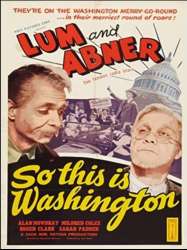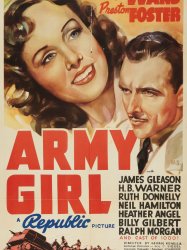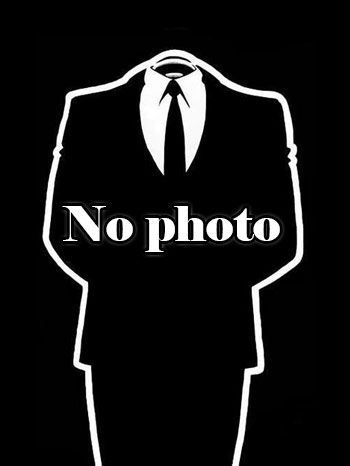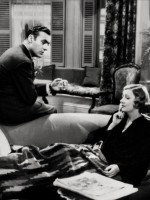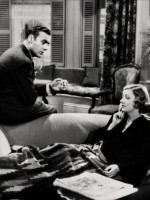Harry J. Wild is a First Assistant Camera and Cinematography American born on 5 july 1901 at New York City (USA)

Harry J. Wild, A.S.C. (July 5, 1901 - February 24, 1961) was a film and television cinematographer. Wild worked at RKO Pictures studios from 1931 through the 1950s. In total Wild was involved in 91 major film projects and two extended television series.
In 1931, he began his career and was hired as second cameraman and operator on nine projects, most notably Fred Niblo's Young Donovan'a Kid (1931). In 1936, Wild shot his first feature, Wallace Fox's sports drama The Big Game. Two years later he shared an Academy Award nomination for the Republic Pictures film Army Girl (1938).
According to film critic Spencer Selby, Wild was a prolific film noir cinematographer, shooting 13 of them, including: Dmytryk's Murder, My Sweet (1944), Johnny Angel (1945), Nocturne (1946), the Jean Renoir-directed The Woman on the Beach (1947), They Won't Believe Me (1947), and others. He was also, in the early 1950s, Jane Russell's cinematographer; he worked on seven of her movies as an actress, three of which were released by other studios: His Kind of Woman (1951) and Son of Paleface (1952) for Paramount, and, his most widely seen movie, Gentlemen Prefer Blondes (1953) for Twentieth Century-Fox.
Il collabore notamment avec les réalisateurs Frank Borzage (Le Cabaret des étoiles en 1943, avec Cheryl Walker et Katharine Hepburn), Howard Hawks (Les hommes préfèrent les blondes en 1953, avec Jane Russell — qu'il photographie à l'occasion de sept films en tout — et Marilyn Monroe), Jean Renoir (La Femme sur la plage en 1948, avec Joan Bennett et Robert Ryan), Don Siegel (Ça commence à Vera Cruz en 1949, film noir — genre auquel il contribue souvent — avec Robert Mitchum et Jane Greer), Robert Stevenson (ex. : Mon passé défendu en 1951, avec Robert Mitchum et Ava Gardner), ou encore John Sturges (La Vénus des mers chaudes en 1955, avec Jane Russell et Gilbert Roland), entre autres. Notons aussi qu'il photographie quelques scènes additionnelles de deux films d'Orson Welles, Citizen Kane (1941) et La Splendeur des Amberson (1942).
En 1939, il obtient une nomination (partagée) à l'Oscar de la meilleure photographie, pour Army Girl (1938, avec Madge Evans et Preston Foster) de George Nichols Jr.
À la télévision, de 1955 à 1960, Harry J. Wild est directeur de la photographie sur neuf séries, dont Au nom de la loi (1959-1960, douze épisodes) et La Quatrième Dimension (1960, un épisode).
Source : Wikidata
Harry J. Wild

- Infos
- Photos
- Best films
- Family
- Characters
- Awards
Nationality USA
Birth 5 july 1901 at New York City (USA)
Death 24 february 1961 (at 59 years) at Los Angeles (USA)
Birth 5 july 1901 at New York City (USA)
Death 24 february 1961 (at 59 years) at Los Angeles (USA)
Harry J. Wild, A.S.C. (July 5, 1901 - February 24, 1961) was a film and television cinematographer. Wild worked at RKO Pictures studios from 1931 through the 1950s. In total Wild was involved in 91 major film projects and two extended television series.
In 1931, he began his career and was hired as second cameraman and operator on nine projects, most notably Fred Niblo's Young Donovan'a Kid (1931). In 1936, Wild shot his first feature, Wallace Fox's sports drama The Big Game. Two years later he shared an Academy Award nomination for the Republic Pictures film Army Girl (1938).
According to film critic Spencer Selby, Wild was a prolific film noir cinematographer, shooting 13 of them, including: Dmytryk's Murder, My Sweet (1944), Johnny Angel (1945), Nocturne (1946), the Jean Renoir-directed The Woman on the Beach (1947), They Won't Believe Me (1947), and others. He was also, in the early 1950s, Jane Russell's cinematographer; he worked on seven of her movies as an actress, three of which were released by other studios: His Kind of Woman (1951) and Son of Paleface (1952) for Paramount, and, his most widely seen movie, Gentlemen Prefer Blondes (1953) for Twentieth Century-Fox.
Biography
Au cinéma, Harry J. Wild débute comme deuxième assistant opérateur en 1926 (sur Le Mécano de la « General », de et avec Buster Keaton), devient premier assistant opérateur en 1931, puis cadreur en 1932. Enfin, il est chef opérateur de 1936 à 1956, principalement au sein de la RKO Pictures, sur quatre-vingt-six films américains, dont des westerns.Il collabore notamment avec les réalisateurs Frank Borzage (Le Cabaret des étoiles en 1943, avec Cheryl Walker et Katharine Hepburn), Howard Hawks (Les hommes préfèrent les blondes en 1953, avec Jane Russell — qu'il photographie à l'occasion de sept films en tout — et Marilyn Monroe), Jean Renoir (La Femme sur la plage en 1948, avec Joan Bennett et Robert Ryan), Don Siegel (Ça commence à Vera Cruz en 1949, film noir — genre auquel il contribue souvent — avec Robert Mitchum et Jane Greer), Robert Stevenson (ex. : Mon passé défendu en 1951, avec Robert Mitchum et Ava Gardner), ou encore John Sturges (La Vénus des mers chaudes en 1955, avec Jane Russell et Gilbert Roland), entre autres. Notons aussi qu'il photographie quelques scènes additionnelles de deux films d'Orson Welles, Citizen Kane (1941) et La Splendeur des Amberson (1942).
En 1939, il obtient une nomination (partagée) à l'Oscar de la meilleure photographie, pour Army Girl (1938, avec Madge Evans et Preston Foster) de George Nichols Jr.
À la télévision, de 1955 à 1960, Harry J. Wild est directeur de la photographie sur neuf séries, dont Au nom de la loi (1959-1960, douze épisodes) et La Quatrième Dimension (1960, un épisode).
Best films
Usually with
Filmography of Harry J. Wild (74 films)
Cameraman
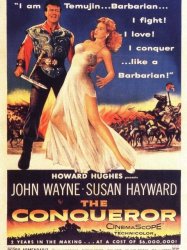
The Conqueror (1956)
, 1h51Directed by Dick Powell
Origin USA
Genres Action, Adventure
Themes Politique, Political films, Films about royalty
Actors John Wayne, Susan Hayward, Agnes Moorehead, Pedro Armendáriz, Thomas Gomez, John Hoyt
Roles Director of Photography
Rating37%





Mongol chief Temujin (later to be known as Genghis Khan) falls for Bortai, the daughter of the Tartar leader, and steals her away, precipitating war. Bortai spurns Temujin and is taken back in a raid. Temujin is later captured. Bortai falls in love with him and helps him escape. Temujin suspects he was betrayed by a fellow Mongol and sets out to find the traitor and to overcome the Tartars.
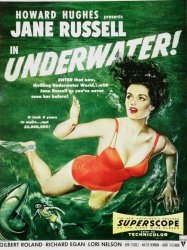
Underwater! (1955)
, 1h39Directed by John Sturges
Origin USA
Genres Drama, Action, Adventure
Themes Seafaring films, Transport films, Underwater action films, Pirate films
Actors Jane Russell, Gilbert Roland, Richard Egan, Joseph Calleia, Lori Nelson, Robert Keith
Roles Director of Photography
Rating53%





Quelque part dans les Caraïbes, Dominique Quesada (Gilbert Roland) part, accompagné d'un ami Johnny Gray (Richard Egan), de l'épouse de celui-ci Thérésa (Jane Russell), d'un prêtre le père Cannon (Robert Keith) et de Gloria (Lorie Nelson), à la recherche de l'épave d'un galion espagnol. Échoué par les fonds depuis trois siècles, le bateau contient un fabuleux butin. Les trois aventuriers vont rencontrer bien des obstacles dans leur périlleuse chasse au trésor...
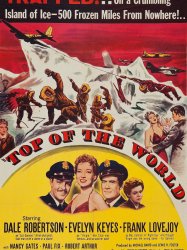
Top of the World (1955)
, 1h31Directed by Lewis R. Foster
Origin USA
Genres Adventure
Actors Dale Robertson, Evelyn Keyes, Frank Lovejoy, Nancy Gates, Robert Arthur, Paul Fix
Roles Director of Photography
Rating59%





This script must be run from the command line

She Couldn't Say No (1954)
, 1h29Directed by Lloyd Bacon, Fred Fleck
Origin USA
Genres Comedy, Comedy-drama
Actors Robert Mitchum, Jean Simmons, Arthur Hunnicutt, Edgar Buchanan, Wallace Ford, Raymond Walburn
Roles Director of Photography
Rating58%





Wealthy Corby Lane (Jean Simmons) visits the small American hamlet of Progress, Arkansas, whose residents had paid for a critical medical operation for her when she was a child. She decides to express her gratitude by giving them money anonymously. The headstrong woman clashes with the local doctor, Robert Sellers (Robert Mitchum), who foresees the resulting chaos.
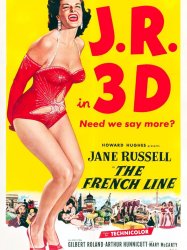
The French Line (1954)
, 1h42Directed by Lloyd Bacon
Origin USA
Genres Drama, Comedy, Musical theatre, Musical, Romance
Themes Films about music and musicians, Musical films
Actors Jane Russell, Gilbert Roland, Arthur Hunnicutt, Craig Stevens, Kim Novak, Rita Corday
Roles Director of Photography
Rating51%





Millionairess Mame Carson's (Jane Russell) oil empire spells trouble for her love life. Men are either after her fortune or afraid of it. Her money-shy fiancé Phil Barton (Craig Stevens) has just given her the brush off.

Gentlemen Prefer Blondes (1953)
, 1h27Directed by Howard Hawks
Origin USA
Genres Comedy, Musical theatre, Romantic comedy, Musical, Romance
Themes Films about music and musicians, Films about sexuality, Théâtre, Erotic films, Musical films, Films based on plays, Films based on musicals, Children's films
Actors Marilyn Monroe, Jane Russell, Charles Coburn, Elliott Reid, Marcel Dalio, Tommy Noonan
Roles Director of Photography
Rating71%





Lorelei Lee (Marilyn Monroe) and Dorothy Shaw (Jane Russell) are American showgirls and best friends. Lorelei has a passion for diamonds, believing that attracting a rich husband is one of the few ways a woman can succeed economically. She is engaged to Gus Esmond (Tommy Noonan), a naive nerd willing to do or buy anything for her. However, Gus is under the control of his wealthy, upper-class father. Dorothy, on the other hand, is looking for a different kind of love, attracted only to men who are good-looking and fit.
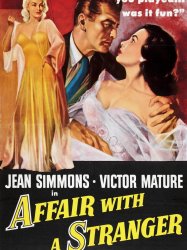
Affair with a Stranger (1953)
, 1h27Directed by Roy Rowland
Origin USA
Genres Drama, Comedy, Comedy-drama, Romance
Themes Films about writers
Actors Jean Simmons, Victor Mature, Jane Darwell, Dabbs Greer, Monica Lewis, Olive Carey
Roles Director of Photography
Rating56%





On a train, playwright Bill Blakeley fends off the romantic flirtations of Janet Boothe, an actress from his play. But when wife Carolyn decides not to join him, Bill makes a dinner date with Janet, who plants a story with a gossip columnist about the Blakeleys possibly heading for a divorce.
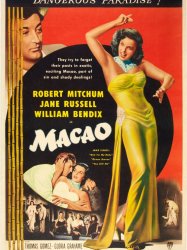
Macao (1952)
, 1h21Directed by Robert Stevenson, Nicholas Ray, Josef von Sternberg, Mel Ferrer
Origin USA
Genres Drama, Adventure, Noir, Crime, Romance
Actors Robert Mitchum, Jane Russell, William Bendix, Gloria Grahame, Thomas Gomez, Brad Dexter
Roles Director of Photography
Rating65%





Three strangers arrive at the port of Macao on the same ship: Nick Cochran (Robert Mitchum), a cynical-but-honest ex-serviceman, Julie Benson (Jane Russell), an equally cynical, sultry night club singer, and Lawrence Trumble (William Bendix), a traveling salesman who deals in both silk stockings and contraband.
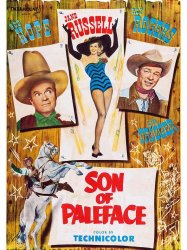
Son of Paleface (1952)
, 1h35Directed by Frank Tashlin
Origin USA
Genres Comedy, Action, Romance, Western
Actors Bob Hope, Jane Russell, Roy Rogers, Lloyd Corrigan, Bill Williams, Douglass Dumbrille
Roles Director of Photography
Rating67%





Peter "Junior" Potter (Hope) has graduated from Harvard and now heads west to the town of Sawbuck Pass to claim his Daddy's fortune. Driving into town in a jalopy and wearing a comical plaid suit, he splashes mud all over a crowd of townspeople. He also discovers to his horror that practically everyone in town claims to be owed a debt, and that his father's treasure chest is empty.

The Las Vegas Story (1952)
, 1h28Directed by Robert Stevenson
Origin USA
Genres Drama, Thriller, Noir, Crime
Actors Jane Russell, Victor Mature, Vincent Price, Hoagy Carmichael, Gordon Oliver, Brad Dexter
Roles Director of Photography
Rating62%





Happy (Hoagy Carmichael), as the piano player at the Last Chance casino in Las Vegas, wonders what split up Linda Rollins (Jane Russell) and Dave Andrews (Victor Mature). Dave went off to fight in the South Pacific, but when he returned, Linda was gone. Happy soon finds out.

Two Tickets to Broadway (1951)
, 1h46Directed by James V. Kern, Fred Fleck
Origin USA
Genres Musical, Romance
Themes Films about music and musicians, Musical films
Actors Tony Martin, Janet Leigh, Gloria DeHaven, Eddie Bracken, Ann Miller, Barbara Lawrence
Roles Director of Photography
Rating55%





Frustrated singers Hannah Holbrook, Joyce Campbell and S. F. "Foxy" Rogers return dejectedly to New York on a bus, their out-of-town engagement in Vermont, arranged by small-time promoter Lew Conway, having been a huge flop.

His Kind of Woman (1951)
, 2hDirected by John Farrow, Richard Fleischer
Origin USA
Genres Drama, Thriller, Comedy, Action, Noir, Crime, Romance
Actors Robert Mitchum, Jane Russell, Vincent Price, Tim Holt, Charles McGraw, Raymond Burr
Roles Director of Photography
Rating69%





Down on his luck, professional gambler Dan Milner (Robert Mitchum) accepts a mysterious job that will take him out of the country for a year but pays $50,000. He accepts a $5,000 down payment and tickets that will take him to an isolated Mexican resort, Morro's Lodge, where he will receive further instructions. Milner is attracted to the only other passenger on his chartered flight to the resort, Lenore Brent (Jane Russell).
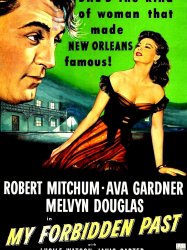
My Forbidden Past (1951)
, 1h21Directed by Robert Stevenson
Origin USA
Genres Drama
Actors Robert Mitchum, Ava Gardner, Melvyn Douglas, Lucile Watson, Janis Carter, Gordon Oliver
Roles Director of Photography
Rating60%





In 1890s New Orleans, wrongly believing Barbara Beaurevelle (Gardner) had stood him up on the eve of their elopement, Dr. Mark Lucas (Mitchum) has returned from South Africa accompanied by Corinne (Janis Carter), a woman he married on the rebound. Determined to win him back, Barbara bribes her cousin (Melvyn Douglas) to break up the marriage, a cold-blooded scheme that ends in death and the doctor suspected of murder.

Born to Be Bad (1950)
, 1h34Directed by Nicholas Ray
Origin USA
Genres Drama, Noir
Actors Joan Fontaine, Robert Ryan, Zachary Scott, Joan Leslie, Mel Ferrer, Harold Vermilyea
Roles Additional Director of Photography
Rating65%





Donna Foster works for publisher John Caine. She agrees to have his niece, Christabel, live with her in San Francisco while attending business school.

Gambling House (1950)
, 1h20Origin USA
Genres Drama, Crime
Actors Victor Mature, Terry Moore, William Bendix, Cleo Moore, Ann Doran, Eleanor Audley
Roles Director of Photography
Rating61%





A gangster, Joe Farrow, kills a man after a game of craps, then offers gambler Marc Fury a payment of $50,000 if he will take the rap and stand trial. Farrow tries to renege on the money, so Fury steals a ledger with information that could put Farrow behind bars.
 Connection
Connection
